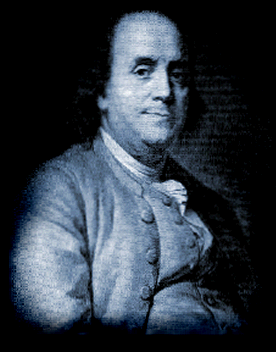
"Printed history brings high price"
by Anne Gilbert
(Salina Journal release, Sept. 3, 1993: 6.)
 |
"Printed history brings high price" by Anne Gilbert (Salina Journal release, Sept. 3, 1993: 6.) |
What would you pay for a piece of American history, say an early pringing of the Declaration of Independence or a copy of it handwritten by Thomas Jefferson?
Auctions on both coasts this past spring proved it doesn't have to be the Fourth of July to send prices for newpaper printings of the Declaration of Independence or early 18th-century issues of Benjamin Franklin's Pennsylvania Gazette skyrocketing. while no handwritten copies of the declaration were up at auction, Selby Kiffer, Sotheby's rare book and document expert, assured me they do exist.
"Jefferson made a number of copies for friends. We know of 25 examples. There could be more."
Perhaps, like me, you assumed that the handwritten and signed Declaration of Independence -- the one under glass in Washington, D.C. -- is the first example made. Wrong.
The one in Washington was handwritten a month after it was first printed by John Dunlap, July 4, 1776, in Philadelphia.
Said Kiffer: "All but two of the previously recorded copies are help by institutions."
One was offered at a recent Sotheby's auction with an estimate between $2 million to $3 million. It is presently begin privately negotiated.
"Within the next month after that first prinitng, more than a dozen additional broadside printings were issued -- as far north as Salem, Mass,. and Exeter, N.H., and as far south as Charleston, S.C.
"Of course, the news spread throughout the Colonies in other papers after that -- from Portsmouth to Williamsburg."
The first newpaper printing, July 6, in John Dunlap's "The Pennsylvania Post," came to Sotheby's May auction with an estimate of $40,000 to 60,000. It sold for a whopping $123,500. Since 1967, six copies have come to light.
Values are affected by condition and who did the printing. Surpisingly, most newpaper copies are in good condition.
"They were printed on the Dutch made rag paper of the period," Kiffer said.
Who knows where any of these old documents or newpapers may turn up! The Declaration Of Independence was even written in German for the Pennysylvanischer Staatbote in 1776.
Needless to say, there have been fakes and facsimilies. Knowing they were done on rag paper, you won't even be tempted by a parchment fake. Size is also important. The Dunlap folio is approximately 10 3/4 x 8 1/2- inches.
Other rare printed Americana collector boys include Benjamin Franklin's early newspaper editions of the Pennsylvania Gazetter as well as his early versions of Poor Richards' Almanacks. Not many early examples (circa 1757) exist. They are worth 10 times more than later examples, Kiffer said.
Not everything costs thousands of dollars. Many rare book dealers have 18th0century newspapers for a couple of hundred dollars. price depends on content and historical significance.
Then there's the Gettysburg Address. Five copies are known. Reproductions are printed on two sides. The original is printed on one side.
Even recent newpapers are the rarities of the future. The first man on the moon is an example of the collectible bit of Americana, and it's affordable.
____________________
Got questions or comments? Email me!
Back to the Class Index